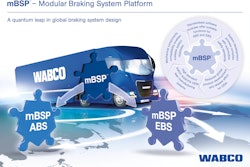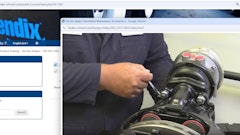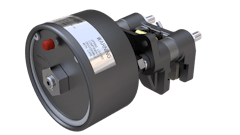“Always in motion is the future.” Yoda wasn’t talking about Earth-bound trucking technology when he said that in Star Wars: The Empire Strikes Back in 1980 – but it feels incredibly relevant in today’s commercial vehicle environment. Whether it’s a new advancement in driver assistance systems or a potential shift in regulation, the landscape seems to be changing every day – and Bendix is committed to helping the industry navigate. Toward the shared goal of safer trucks and safer roadways, Bendix Commercial Vehicle Systems LLC, the North American leader in the development and manufacture of leading-edge active safety and braking system technologies for commercial vehicles, has released two papers: “The Future of Autonomy – Fact, Fantasy, or a Little of Both?” and “Full Stability and the Roadmap to the Future – Are We Still on the Right Road?”
Autonomous Trucking: Fact, Fantasy, or a Little of Both?
“Over the last year alone, an awful lot has happened in the world of automated and autonomous vehicles,” says Fred Andersky, Bendix Director, Customer Solutions – Controls Group, who authored “The Future of Autonomy – Fact, Fantasy, or a Little of Both?”
“It’s mindboggling: We’ve gone from conceptual ideas to real-world testing for both automated cars and trucks, and ferreting out the facts from the fiction and the reality from the hype isn’t always easy. Autonomy encompasses a number of factors, including the appropriate use, understanding, and implementation of the technology, along with the wider impact of the ecosystem surrounding the application.”
The foundations of tomorrow’s advanced systems are already in place and making a difference in fleet and vehicle safety: All major North American heavy-duty truck manufacturers offer factory-installed full-stability technologies such as Bendix ESP Electronic Stability Program and collision mitigation systems like Bendix Wingman Advanced and Bendix Wingman Fusion. Some truck builders and a wide range of fleets have made the systems standard equipment.
Getting to truly autonomous vehicles, Andersky explains, is not a revolution, but an evolution: It will involve building upon proven technologies and expanding the capabilities of those technologies with a strong understanding of their impact on all who use the roads and are involved in the transportation industry.
“From our perspective,” he says, “continuing to grow and evolve advanced driver assistance systems is the logical pathway to the future.”
“The Future of Autonomy” offers a comprehensive exploration of factors tied to the development of current and future safety technologies, including crash statistics and trends, existing and proposed legislation, and the important role of safe truck drivers practicing safe driving habits.
The Present and Future of Full Stability
With “Full Stability and the Roadmap to the Future – Are We Still on the Right Road?”, Bendix has significantly updated its 2008 baseline white paper that made the case for full stability – also known as Electronic Stability Control – incorporating new data and addressing the newly implemented National Highway Traffic Safety Administration (NHTSA) mandate requiring the technology on most new Class 7 and 8 air-braked tractors in the United States.
“Since we published our original white paper in 2008, we’ve seen some decreases in stability-related events – rollovers and loss-of-control,” Andersky says. “It’s not as great as one would hope, however, and that’s primarily due to adoption rates flatlining over the last few years. That said, as the date of the August 1 mandate – Federal Motor Vehicle Safety Standard 136 – neared, more fleets and original equipment manufacturers adopted full stability as standard, which we expected, given that NHTSA found that full stability can help drivers in more situations than roll-only stability systems.”
Despite the fact that FMVSS 136 has already been implemented, the current presidential administration requires elimination of two rules for every one added, and the full-stability rule is one that has been targeted by NHTSA for rollback consideration.
“This may be a mistake,” Andersky says. “FMVSS 136 is not a burdensome regulation, as expected cost points are low, and implementation is already underway based on a number of OEMs making this technology standard. And it’s a regulation that helps solve a deadly problem still very much in evidence on our roadways.”
Bendix safety technologies are not intended to enable or encourage aggressive driving, but to complement safe driving practices. Responsibility for the safe operation of any commercial vehicle remains with the driver at all times, and no safety system replaces a skilled, alert driver exercising safe driving techniques and proactive, comprehensive driver training.
“The Future of Autonomy – Fact, Fantasy, or a Little of Both?” and “Full Stability and the Roadmap to the Future – Are We Still on the Right Road?” are both available for free download on the company's website, as well as the Bendix multimedia center at knowledge-dock.com.
By providing industry leadership, an ever-growing portfolio of technologies, and unparalleled post-sales support, Bendix aims to deliver on safety, vehicle performance, and efficiency, encouraging fleet and owner-operator investment in equipment that lowers total cost of ownership while improving everyone’s highway safety.
![Sa P75 I Sahr[80]](https://img.oemoffhighway.com/mindful/acbm/workspaces/default/uploads/2025/10/sa-p75-isahr80.Cn3n79HB4H.jpg?auto=format%2Ccompress&fit=crop&h=100&q=70&w=100)







![Sa P75 I Sahr[80]](https://img.oemoffhighway.com/mindful/acbm/workspaces/default/uploads/2025/10/sa-p75-isahr80.Cn3n79HB4H.jpg?ar=16%3A9&auto=format%2Ccompress&fit=crop&h=135&q=70&w=240)










